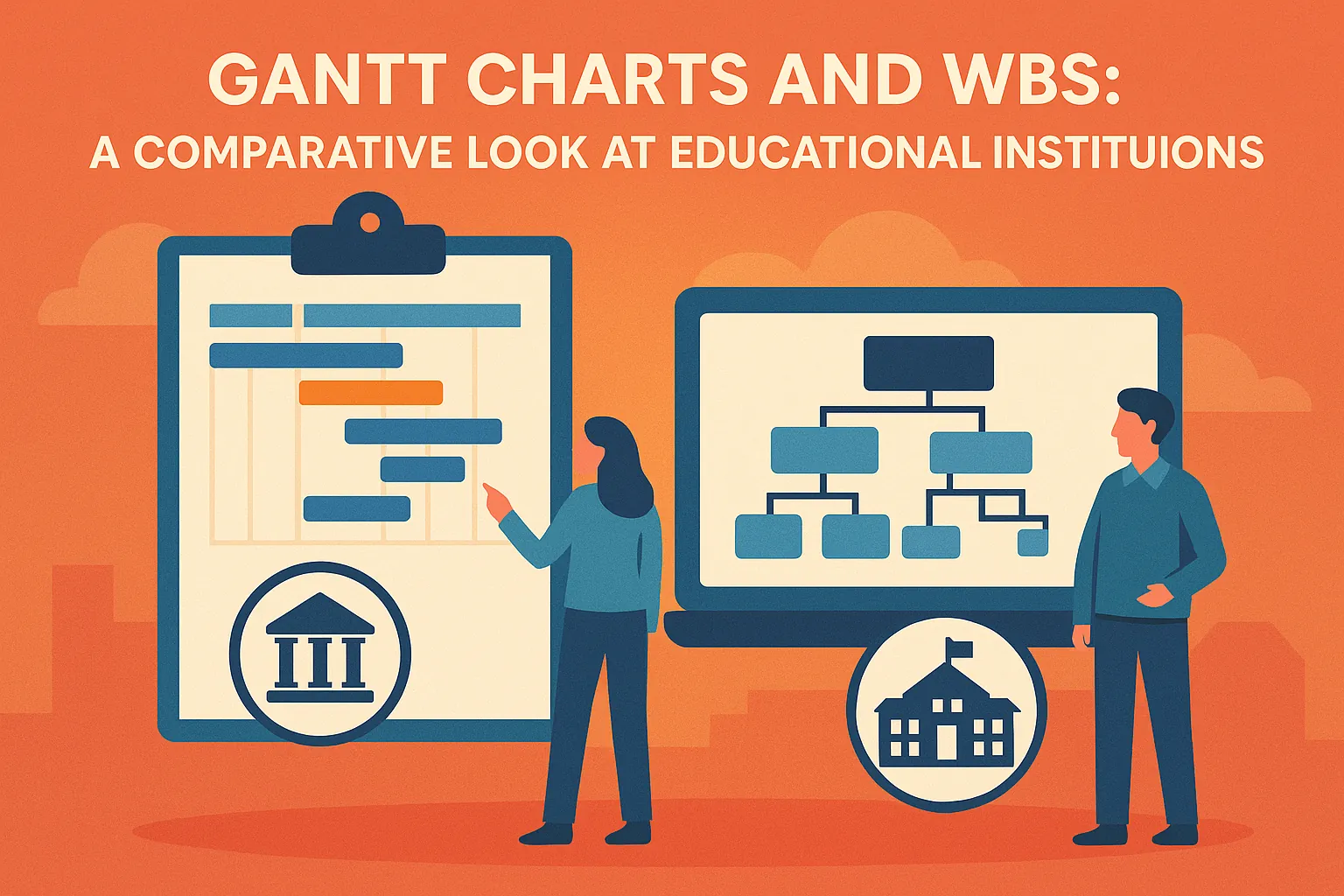Introduction to Project Management Tools in Education
Project management plays a crucial role in facilitating effective teaching and learning experiences. It encompasses the planning, execution, and evaluation of educational projects, ensuring that objectives are met within specified timelines and resources. For educators and academic administrators, mastering project management is essential for fostering collaboration, enhancing student engagement, and achieving institutional goals.
Definition of Project Management in Education
Project management in education refers to the systematic approach to planning, executing, and overseeing educational initiatives, such as curriculum development, event organization, and research projects. This process involves defining project goals, allocating resources, managing timelines, and assessing outcomes to ensure that educational objectives are achieved efficiently and effectively.
Importance of Effective Project Management for Educators and Academic Administrators
Effective project management is vital for educators and academic administrators for several reasons:
- Enhanced Collaboration: It fosters teamwork among faculty, staff, and students, promoting a shared understanding of project goals and responsibilities.
- Resource Optimization: By effectively managing resources, educational institutions can maximize their impact and minimize waste, ensuring that projects are completed within budget.
- Improved Accountability: Clear project management practices help track progress and hold team members accountable for their contributions, leading to better outcomes.
- Increased Student Engagement: Well-managed projects can create more engaging learning experiences for students, encouraging active participation and deeper understanding of the subject matter.
Brief Introduction to Gantt Charts and WBS as Project Management Tools
Two essential tools in project management are Gantt charts and Work Breakdown Structures (WBS). Both serve to enhance the planning and execution of projects, particularly in educational settings.
- Gantt Charts: These visual tools provide a timeline for project tasks, illustrating when each task starts and ends. Gantt charts help educators and administrators schedule activities, track progress, and communicate deadlines effectively. They are particularly useful for managing complex projects with multiple interdependencies, allowing for a clear overview of the entire project lifecycle [2][9].
- Work Breakdown Structure (WBS): A WBS is a hierarchical decomposition of a project into smaller, more manageable components. It helps educators break down each step of their projects, ensuring that all tasks are considered and organized logically. This structure aids in resource allocation and task assignment, making it easier to monitor progress and identify potential challenges [6][11].
Understanding Gantt Charts
Gantt charts are a vital tool in project management, particularly in educational settings where they facilitate project-based learning. They provide a visual representation of a project’s timeline, helping educators and students manage tasks effectively. Below is a detailed exploration of Gantt charts, their components, examples of their application in educational institutions, and the benefits they offer.
Definition and History of Gantt Charts
A Gantt chart is a horizontal bar chart that illustrates a project schedule, showing the start and finish dates of various elements of a project. Developed by Henry Gantt in the 1910s, this tool was initially used in manufacturing and construction but has since been adopted across various fields, including education. Gantt charts help visualize the sequence of tasks and their duration, making it easier to understand project timelines and dependencies [5][8].
Components of a Gantt Chart
Gantt charts consist of several key components:
- Tasks: These are the individual activities or milestones that need to be completed within the project. Each task is represented by a horizontal bar on the chart.
- Timelines: The horizontal axis of the Gantt chart represents time, typically broken down into days, weeks, or months, depending on the project’s duration.
- Dependencies: These indicate the relationships between tasks, showing which tasks must be completed before others can begin. This is crucial for understanding the flow of the project and managing potential bottlenecks [4][9].
Examples of Gantt Charts in Project-Based Learning
In educational institutions, Gantt charts can be utilized in various project-based learning scenarios:
- Curriculum Development: Educators can use Gantt charts to plan the development of new courses or programs, mapping out the necessary steps and timelines for completion.
- Event Planning: Schools and universities often organize events such as conferences, workshops, or exhibitions. Gantt charts help in scheduling tasks, assigning responsibilities, and ensuring that all preparations are completed on time.
- Research Projects: Students working on group research projects can use Gantt charts to outline their tasks, deadlines, and dependencies, promoting collaboration and accountability [6][10].
Benefits of Using Gantt Charts for Educators and Students
The implementation of Gantt charts in educational settings offers several advantages:
- Enhanced Organization: Gantt charts provide a clear visual representation of project timelines, helping educators and students stay organized and focused on their tasks.
- Improved Communication: By visualizing the project schedule, Gantt charts facilitate better communication among team members, ensuring everyone is aware of their responsibilities and deadlines.
- Increased Accountability: Assigning specific tasks to individuals and tracking their progress through a Gantt chart fosters a sense of accountability among students, encouraging them to meet their commitments.
- Effective Time Management: Gantt charts help educators and students allocate their time efficiently, allowing them to prioritize tasks and manage their workload effectively [3][12][14].
Understanding Work Breakdown Structure (WBS)
In within educational institutions, the Work Breakdown Structure (WBS) serves as a crucial tool for organizing and managing projects effectively. This section delves into the definition, components, examples, and benefits of WBS, highlighting its relevance in project-based learning.
Definition and Purpose of WBS
A Work Breakdown Structure (WBS) is a hierarchical decomposition of a project into smaller, more manageable components. It outlines what a project will achieve or build, including the project scope, and helps project managers break down each step necessary to reach the final results. The primary purpose of a WBS is to provide a structured approach to project planning, ensuring that all tasks are identified and organized systematically [5][13].
Components of WBS
The WBS consists of several key components that contribute to its effectiveness in project management:
- Deliverables: These are the tangible or intangible outcomes that the project aims to produce. In an educational context, deliverables could include completed assignments, research papers, or educational programs.
- Tasks: Each deliverable is broken down into specific tasks that need to be completed. For instance, if the deliverable is a research project, tasks might include literature review, data collection, and analysis.
- Sub-tasks: Tasks can further be divided into sub-tasks, which detail the individual actions required to complete a task. This granularity helps in assigning responsibilities and tracking progress more effectively [5][9].
Examples of WBS in Educational Projects
In educational settings, WBS can be applied to various projects, such as:
- Curriculum Development: A WBS for developing a new curriculum might include deliverables like course outlines, lesson plans, and assessment tools. Tasks could involve research on educational standards, stakeholder consultations, and pilot testing.
- Event Planning: For organizing a school event, the WBS could outline deliverables such as venue selection, marketing materials, and participant registration. Tasks would include contacting vendors, designing promotional content, and managing logistics [10][15].
Benefits of Using WBS for Clarity and Organization in Project-Based Learning
Implementing a WBS in educational projects offers several advantages:
- Enhanced Clarity: By breaking down projects into smaller components, educators can gain a clearer understanding of the scope and requirements, reducing ambiguity and confusion among team members [10][13].
- Improved Organization: A structured WBS helps in organizing tasks logically, making it easier to assign responsibilities and track progress. This organization is particularly beneficial in collaborative environments where multiple stakeholders are involved [9][10].
- Facilitated Communication: A well-defined WBS serves as a communication tool among educators, students, and administrators, ensuring everyone is aligned on project goals and expectations [10][12].
Gantt Chart vs WBS: Key Differences
In educational institutions, two essential tools stand out: Gantt charts and Work Breakdown Structures (WBS). Both serve unique purposes and can significantly enhance project-based learning when applied effectively. Here’s a comparative look at their key differences, focusing on how schools and universities can leverage these tools for successful project management.
Overview of Primary Differences
- Purpose and Functionality: The WBS is primarily designed to break down a project into manageable components, defining the scope and organizing work into smaller, controllable tasks. In contrast, Gantt charts focus on scheduling these tasks over time, providing a visual timeline that illustrates when each task should start and finish [2][9].
Project Organization and Scheduling
- Approach to Organization: WBS organizes project tasks hierarchically, allowing educators to see the relationship between different components of a project. This structure helps in understanding the overall scope and ensures that all necessary tasks are accounted for. On the other hand, Gantt charts present a linear view of project scheduling, showing how tasks overlap and their dependencies, which is crucial for tracking progress and ensuring timely completion [4][10].
Visual Representation Differences
- Timelines vs. Hierarchical Structures: The visual representation of these tools is one of their most significant differences. Gantt charts display tasks along a timeline, making it easy to see the duration of each task and how they relate to one another in terms of scheduling. This format is particularly useful for monitoring progress and identifying potential delays. Conversely, WBS uses a tree-like structure to represent tasks, which helps in visualizing the breakdown of work and understanding the project’s scope at a glance [1][5].
When to Use Gantt Charts vs. WBS in Educational Projects
- Choosing the Right Tool: In educational settings, the choice between using a Gantt chart or a WBS often depends on the specific needs of the project. For projects that require detailed planning and a clear understanding of task relationships, a WBS is invaluable. It allows educators to define all necessary tasks and their interdependencies before moving on to scheduling. Conversely, once the tasks are defined, Gantt charts become essential for tracking progress and managing timelines effectively. They are particularly beneficial for projects with strict deadlines or those that involve multiple stakeholders, as they provide a clear visual representation of the project’s status [3][6][12].
Choosing the Right Tool for Your Project
Selecting the appropriate tool can significantly impact the success of project-based learning initiatives. Two widely used tools are Gantt charts and Work Breakdown Structures (WBS). Understanding their differences and applications can help educators and academic administrators make informed decisions.
Factors to Consider When Choosing Between Gantt Charts and WBS
Project Complexity:
- WBS: This tool is particularly effective for breaking down complex projects into manageable components. It provides a hierarchical structure that helps educators define the scope of the project and organize tasks systematically. This is crucial in educational settings where projects may involve multiple subjects or interdisciplinary approaches [12].
- Gantt Chart: While Gantt charts can also handle complexity, they excel in visualizing the timeline and dependencies of tasks. If a project involves numerous interrelated activities, a Gantt chart can help educators see how tasks overlap and the sequence in which they should be completed [13][10].
Team Size:
- WBS: For smaller teams or individual projects, a WBS can be sufficient to outline tasks and responsibilities. It allows for clear delineation of roles and expectations, which is essential in educational environments where collaboration is key [11].
- Gantt Chart: In larger teams, Gantt charts become invaluable. They facilitate communication by providing a visual representation of who is responsible for what and when tasks are due. This can enhance accountability and ensure that all team members are aligned with the project timeline [6][10].
Timeline:
- Gantt Chart: If the project has a strict deadline, Gantt charts are particularly useful. They allow educators to map out the entire project timeline, set milestones, and track progress against deadlines. This is especially important in academic settings where timing can be critical, such as during exam periods or project submissions [5][9].
- WBS: While WBS does not inherently provide a timeline, it can be used in conjunction with Gantt charts to establish a timeline after the tasks have been defined. This combination can offer a comprehensive view of both the scope and schedule of the project [12][11].
Tips for Integrating Both Tools into the Project Management Process
- Start with WBS: Begin by creating a WBS to outline the project scope and break it down into manageable tasks. This will provide a clear understanding of what needs to be accomplished [8][12].
- Transition to Gantt Chart: Once the WBS is established, convert it into a Gantt chart. This will help visualize the project timeline, set dependencies, and track progress effectively [1][4].
- Regular Updates: Ensure that both tools are regularly updated throughout the project lifecycle. This will help maintain clarity and keep all team members informed of any changes in scope or timeline [6][10].
- Training and Familiarization: Provide training for educators and administrators on how to use both tools effectively. Familiarity with these tools can enhance their utility and improve project outcomes [11][12].
By carefully considering the factors of project complexity, team size, and timeline, educators and academic administrators can choose the right tool for their project management needs. Integrating both Gantt charts and WBS can lead to a more organized and successful project-based learning experience.
Conclusion
In project-based learning, Gantt charts and Work Breakdown Structures (WBS) serve as invaluable tools for educators and academic administrators. Their importance lies in their ability to enhance project management, streamline communication, and foster collaboration among students and faculty alike.
- Importance of Gantt Charts and WBS: Both Gantt charts and WBS provide a visual representation of project tasks, which is crucial for organizing and planning educational projects. Gantt charts allow educators to map out project timelines, set milestones, and track progress, while WBS helps in breaking down complex projects into manageable components. This dual approach not only clarifies expectations but also aids in resource allocation and scheduling, ultimately leading to more successful project outcomes [3][11].
- Encouragement to Experiment: Educators are encouraged to experiment with both Gantt charts and WBS in their project-based learning initiatives. By integrating these tools into their teaching practices, they can enhance student engagement and improve project management skills. The flexibility of these tools allows for adaptation to various educational contexts, making them suitable for a wide range of projects, from simple classroom assignments to complex interdisciplinary initiatives [10][12].
In conclusion, the integration of Gantt charts and WBS into project-based learning not only supports effective project management but also enriches the educational experience for both students and educators. Embracing these tools can lead to more organized, efficient, and impactful learning outcomes.
Find out more about Shaun Stoltz https://www.shaunstoltz.com/about/.
This post was written by an AI and reviewed/edited by a human.



